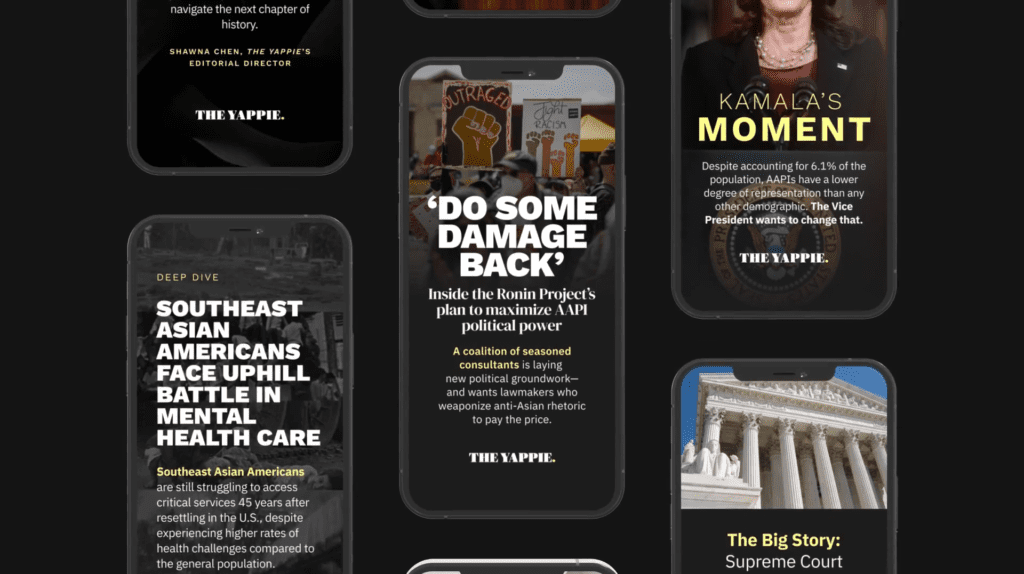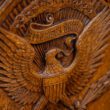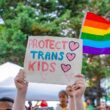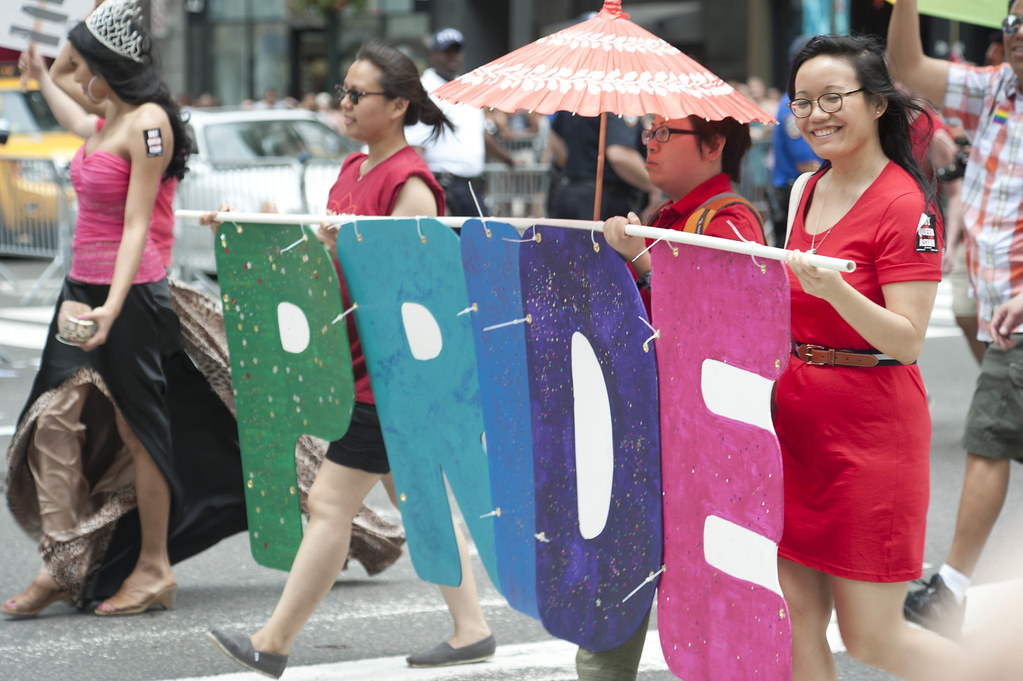Sign up here to receive The Yappie‘s weekly briefing on Asian American + Pacific Islander politics and support our work by making a donation.
Editor’s note: Mental health resources are listed at the bottom of this article.
If the AAPI community is one on the margins, then the queer AAPI community is one on the margins of the margins.
Queer AAPIs live in two sets of bicultural worlds:
AAPI vs. white
queer vs. straight/cis
In both communities, queer AAPIs face differing levels of oppression. A 2006 survey from the National Gay and Lesbian Task Force Policy Institute found that 89% of all AAPI LGBT respondents believe homophobia and/or transphobia are a problem in the larger AAPI community. 78% said LGBT AAPI people encounter racism in the predominantly white LGBT community.
“‘No fats, no femmes, no Asians’ is a phrase in the queer community I am too familiar with,” Andre Menchavez, GLAAD campus ambassador, writes in GLAAD's publication amp. “Similarly, I faced the complexity of both fetishization and isolation while dating as an Asian queer person. Additionally, in my experience in the Filipinx community, religious fundamentals engrained in this culture were often anti-queer, and therefore, anti-me. I was subjected to religious counseling in middle school when I came out, and I was taught that queerness was blasphemous and wrong.”
“To exist in these communities, it feels like one must constantly sacrifice a part of themselves to belong,” Menchavez added.
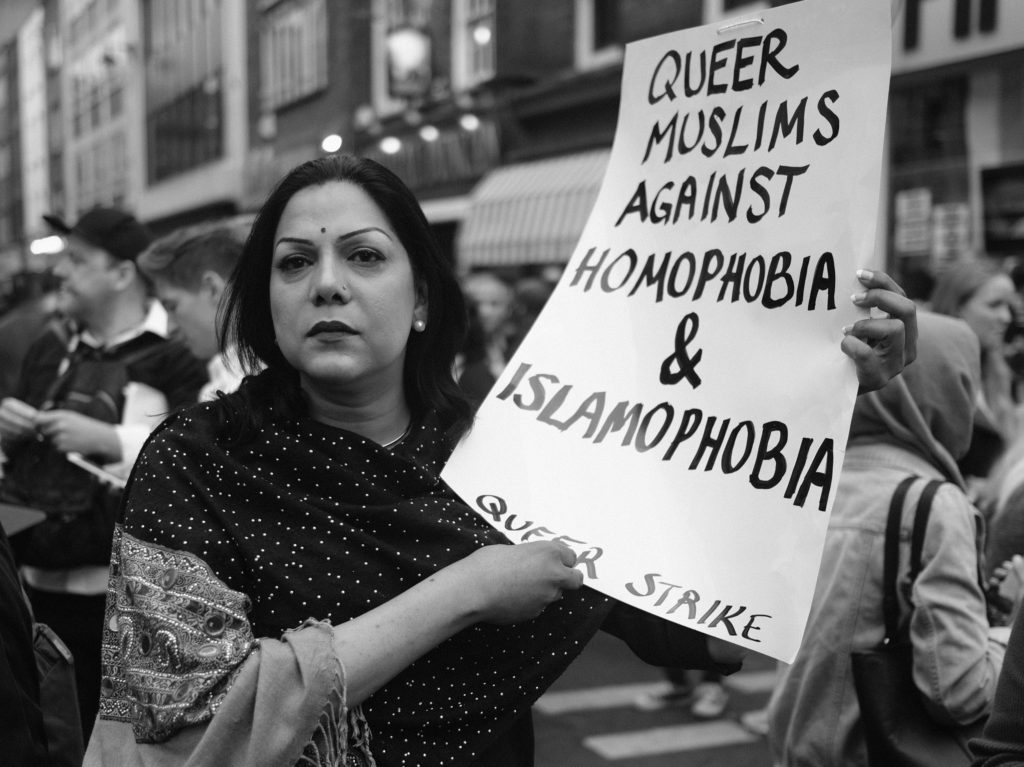

Anti-queerness in the AAPI community is enabled by:
- Fear of the Other
- Religious fundamentalism
- Stigma around HIV/AIDS
- Immigrant parents’ heteronormative expectations
- America’s rigid norms on gender and sexuality
- Colonializers’ attempts to wipe out the “savage”
- Repression of sexuality
- Cultural and generational differences
- Lack of education and/or awareness
“Especially in cultures that stress familial duty or conformity, LGBTQ API youth can carry a weight of expectations rooted in traditions that define success through rigid gendered norms,” according to a report from NQAPIA and Human Rights Campaign.
REMEMBER: America’s imposition of the binary is not the only cultural expression of gender.








- Androgyny in East Asian cultures
- South Asian dance forms
- Thailand’s kathoey/katoey
- Fa’afafine and fa’afatama in Samoan cultures
- Leitis in Tonga
- Māhū in Native Hawaiian and Tahitian cultures
Yet, queer AAPIs continue to face rejection and disownment in their own families and communities.
“Queer Asian Americans and those who have both the experiences of displacement, whether through migration or through the genocide and colonization of Indigenous people, understand or have kind of emotional expertise in what it means to be far away from home,“ writer and activist Franny Choi told Hyphen Magazine in 2019.
“And so, I think the combination of those two experiences, being displaced across nations and geography and also being displaced within one’s own body and gender identity—I think all of that culminates in lessons of the heart that are important to lots of people and that a lot of people can find wisdom and solace in,“ Choi added.
Queer AAPIs’ everyday challenges include:
- Having to conform to hide who you are and “pass”
- Fetishization as both AAPI and queer
- Internalized self-hate
- Having to sacrifice one identity for the other to belong in different contexts
- Barred from accessing basic services like haircuts or cake
- Lack of courtesies afforded e.g. pronouns and deadnames
- Labor of educating
- Fear of ostracization
- The never-ending fight for equal rights
They also face higher rates of violence and discrimination, especially in housing, poverty, and employment. According to the aforementioned survey from the National Gay and Lesbian Task Force Policy Institute, 98% of AAPI LGBT respondents had experienced at least one form of discrimination and/or harassment.
- 85% of AAPI LGBT had experienced such behavior based on their race or ethnicity, while 75% experienced it based on their sexual orientation.
- Nearly 7 in 10 trans respondents faced discrimination due to their trans identity.
Those numbers translate into dire mental health needs that often go unmet. Data from The Trevor Report shows that…
- Compared to straight and cis AAPI youth, AAPI LGBTQ youth report higher rates of depressed mood and suicidality.
- Compared to cisgender AAPI LGBQ youth, AAPI trans and nonbinary youth are 3x as likely to attempt suicide.
But “queer and trans folks are experts in many ways in recreating homes after or in the wake of structures that didn’t want to call us into their families and into their circles,” Choi notes. And it's this force that drives the queer AAPI community to rise up again and again, time after time.
In recent years, various queer AAPI organizations have partnered to produce campaigns celebrating queer AAPI pride. In one, parents of queer AAPIs speak about the discrimination their children have faced in the AAPI community. Different versions of the ad were recorded in different languages, all urging other parents to embrace and stand up for queer AAPIs.
Despite contrary thought, queer AAPIs have been around forever. They are the legacy of a long line of ancestors who flouted conventional norms and subverted the gender construct. The community is too often erased or ignored in the larger AAPI landscape, but their stories do matter.
A brief snapshot
- Opposition to homosexuality did not become firmly established in various Asian and Pacific countries until the 19th and 20th centuries through Westernization efforts.
- Nafanua, a warrior and chief of Samoan early history, is an icon of faʻafafine and faʻatane. She becomes immortalized as a goddess.
- 51 to 7 BC: Emperor Cheng of Han, a bisexual person, falls in love with a man named Zhang Fang, but they are later forced apart by the emperor's mother.
- 1800s: Kaomi Moe is aikāne to King Kamehameha III, the Hawaiian Kingdom's third monarch, and a māhū.
- 1966: San Francisco police are called on a group of trans folks and forcibly make an arrest. A riot breaks out; protesters include Tamara Ching, a trans activist and sex worker of Native Hawaiian, Chinese, and German heritage. The incident goes on to leverage the fight for LGBTQ civil rights in California.
- 1969: New York City police raid a gay bar and arrest 13 people, leading to the Stonewall Riots. Queer people of color were the most vulnerable to abuse at the bar, which was already under police surveillance and harassment. A crowd responds to pleas for help by smashing windows, throwing bottles, and attacking officers. The incident sparks an uprising against anti-queer oppression.
- 1979: The Queer Asian Pacific Islander Alliance of New England, originally named Boston Asian Gay Men and Lesbians, becomes the first queer AAPI organization in the U.S. Members later participate in the March on Washington for Gay and Lesbian Rights.
- 1982: Helen Zia, a lesbian Chinese American writer, becomes a national organizer and spokesperson for the Justice for Vincent Chin campaign after two white men bludgeon Chin to death in Detroit and avoid prison.
- 1983: Asian lesbians protest Ollie's “Oriental Night” after employees at the Oakland lesbian bar wear “Oriental” costumes and makeup.
- 1986: Queer South Asians create the Trikone Newsletter.
- 1989: The first National Asian Pacific Lesbian retreat is held in Santa Cruz, California.
- 1992: The Tonga Leitis Association is established to advocate for Leitis' rights.
- 1993: Joey Mataele, a Leiti queer rights activist who co-founded the Tonga Leitis Association, establishes the Miss Galaxy Queen Pageant as an annual event to celebrate the diversity and creativity of fakaleitis and the queer community in Tonga. She is later named a Knight of Tonga's Order of Sālote Tupou III.
- 1998: U.T.O.P.I.A. originates in San Francisco to support queer Polynesians and friends consisting of members from Samoa, Tonga, Hawai’i, Tahiti, and Fiji.
- 2003: Shades of Yellow, a social gathering and safe space for queer Hmong Americans, is founded in Minneapolis, Minnesota.
- 2004: A coalition of groups convenes at a conference in New York, titled “Queer Asian Pacific Legacy,” to organize and educate pan-Asian Pacific American LGBTQ communities.
- 2005: Star Trek actor George Takei, one of at least 120,000 Japanese Americans incarcerated during World War II, comes out as gay to the public.
- 2007: The Pacific Sexual and Gender Diversity Network is formed to support men who have sex with men (MSM) and trans people in the Pacific, especially in relation to HIV/AIDS.
- 2008: The community-based organization GALA is founded in Guam to "strengthen the quality of life for gay, lesbian, bisexual, transgender, queer and intersex persons, their families and friends."
- 2009: The first National Queer Asian Pacific Islander Alliance (NQAPIA) conference is hosted in Seattle, Washington.
- 2010: The first National Queer Southeast Asian Conference convenes in Minneapolis, Minnesota.
- 2011: Amy Sueyoshi initiates the Dragon Fruit Project in partnership with the GLBT Historical Society and APIQWTC to collect oral histories of LGBTQ AAPI women and trans activists from the 60s through the 90s.
- 2012: Representing California's 41st congressional district, Japanese American Mark Takano makes history as the first openly gay person of color elected to Congress.
- 2014: Filipino model Geena Rocero's TED Talk on International Day of Trans Visibility goes viral. “The world makes you something that you're not, but you know inside what you are, and that question burns in your heart: How will you become that?” she asks.
- 2016: President Barack Obama names Hinaleimoana Kwai Kong Wong-Kalu, a māhū kumu hula and community leader, a White House Champion of Change.
- 2018: The documentary “Leitis in Waiting” debuts to international acclaim. The film follows Mataele and the Tonga Leitis Association, telling the story of queer rights in the Pacific. “Leitis In Waiting” later wins the 2018 Audience Award at Festival of Commonwealth Film, Special Jury Prize at FIFO Tahiti, and the Asia Pacific Queer Film Festival Alliance (APQFFA) Award. It also receives a nomination for the 2019 GLAAD Media Award for Outstanding Documentary.
- 2018: Chella Man gains a platform to speak on the intersection of race, gender, and disability after giving a TED Talk on his identity as a trans Jewish and Asian artist who is deaf and genderqueer. “I decided to be my own representation,” he tells Teen Vogue.
- 2019: A Filipino and Black trans woman, Leyna Bloom captivates the world with her portrayal of a kiki ballroom dancer in the film "Port Authority." It becomes the first film at Cannes Film Festival to feature a trans woman of color in a leading role.
- 2019: After shooting to fame on YouTube, comedian Lilly Singh, who is bisexual, is the first person of Indian descent to host an American major broadcast network late-night talk show.
- 2019: Queer, trans, nonbinary Filipino American activist and educator AC Dumlao is named an NYC Pride Community Hero for their advocacy on the visibility and inclusion of trans, gender nonconforming, and nonbinary communities.
As ALOK, the gender nonconforming Indian American artist, once said: “we are creating a different” world.
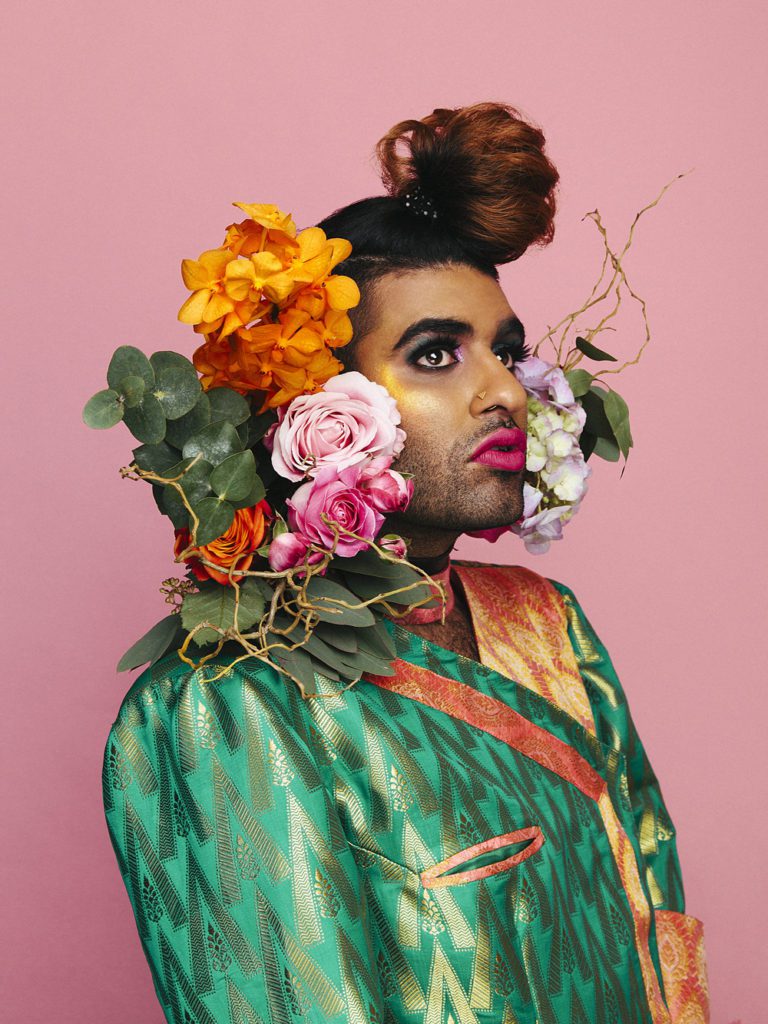

it’s not quite our own yet, but we have dreams here. we live in dreams, from dreams, with dreams. there is always simultaneity. multiple stories. and all of them are true. and all of them are not. today i choose to also tell the one of my hairy belly being embraced the sun. the one of my smile emerging from yet another sleepless night—like that stubborn sun, how it comes back somehow. the one where i walk outside in this city of unrequited love & ask it to love me back. the impossibility of that. the impossibility of this. the impossibility of me. we the possible impossible. the story of we—the possible impossible.
—ALOK
Resources
- Asian Pride Project
- National Queer Asian Pacific Islander Alliance
- Asian Pacific Islander Queer Women & Transgender Community
- Guam Alternative Lifestyle Association
- Pacific Sexual Diversity Network
- United Territories of Pacific Islanders’ Alliance
- Society of Fa’afafine in American Samoa
- GAPIMNY — Empowering QTAPIs
- Asian Pacific AIDS Intervention Team
- Sarbat
- Satrang
- Prism Foundation
- National Asian American Pacific Islander Mental Health Association
- Visibility Project
- The Trevor Project
- GLAAD
- Mental Health America
Mental health support:
If you are struggling with distressing thoughts, call the National Suicide Prevention Lifeline at 1-800-273-8255 (TALK).
- More at: SpeakingOfSuicide.com/resources.
The South Asian Sexual & Mental Health Alliance offers a 24/7 hotline to discuss issues you or a friend are experiencing, as well as provide referrals to local supports.
- SAMHSA’s National Helpline: 1-800-662-HELP (4357) or 1-800-487-4889 (TDD)
- Free and confidential information in English and Spanish for individuals accessible 24/7.
Contact Asian Women’s Center’s 24/7 crisis hotline at 1-877-751-0880.
The Trevor Project, an organization serving queer youth, operates a 24/7 hotline at 1-866-488-7386.
LGBT National Hotline offers a safe space for queer folks at 888-843-4564. Available:
- Monday through Friday: 1 pm. to 9 p.m. PST
- Saturday: 9 a.m. to 2 p.m. PST
The NAMI HelpLine can be reached Monday through Friday, 10 a.m. to 8 p.m. Eastern time. Call 1-800-950-NAMI (6264) or email [email protected].
- Text NAMI to 741-741 to receive free, 24/7 crisis support via text message.
Reach the Crisisline at 1-800-273-TALK.
- For assistance in Asian languages, dial 1-877-990-8585.
- Text CONNECT to 741741 to access the Crisis Text Line.




